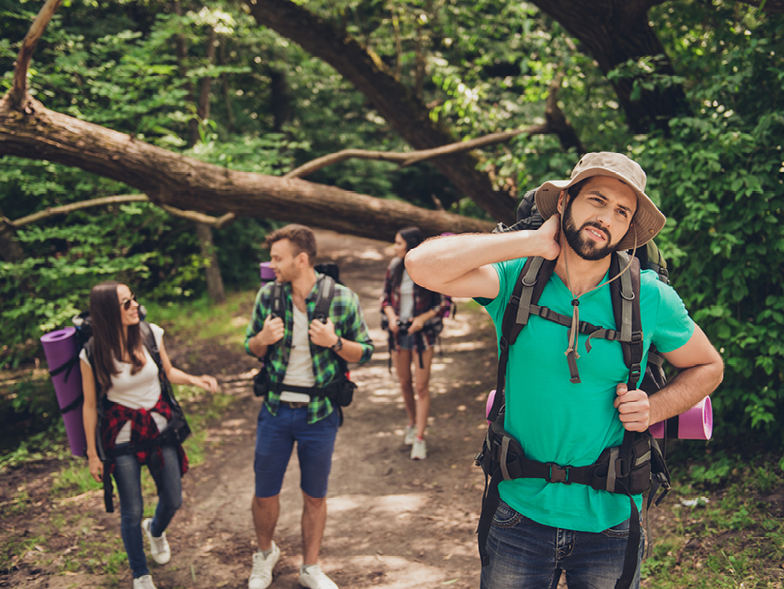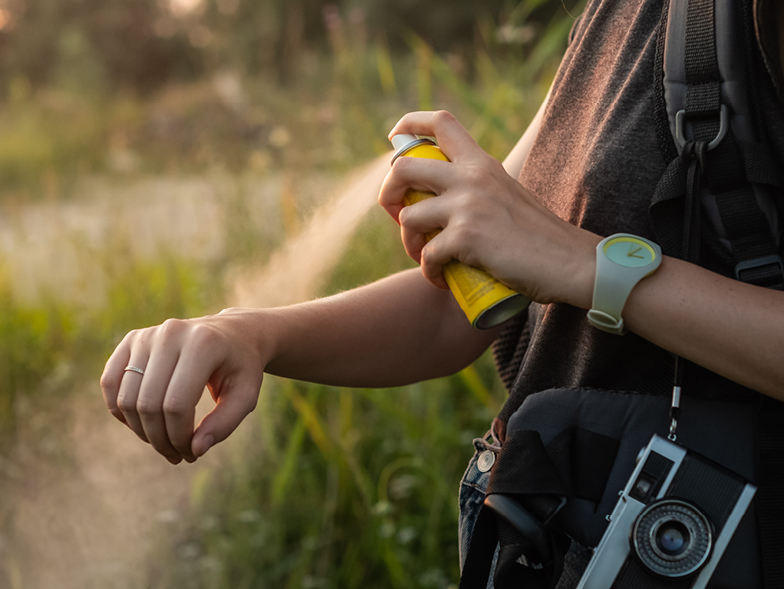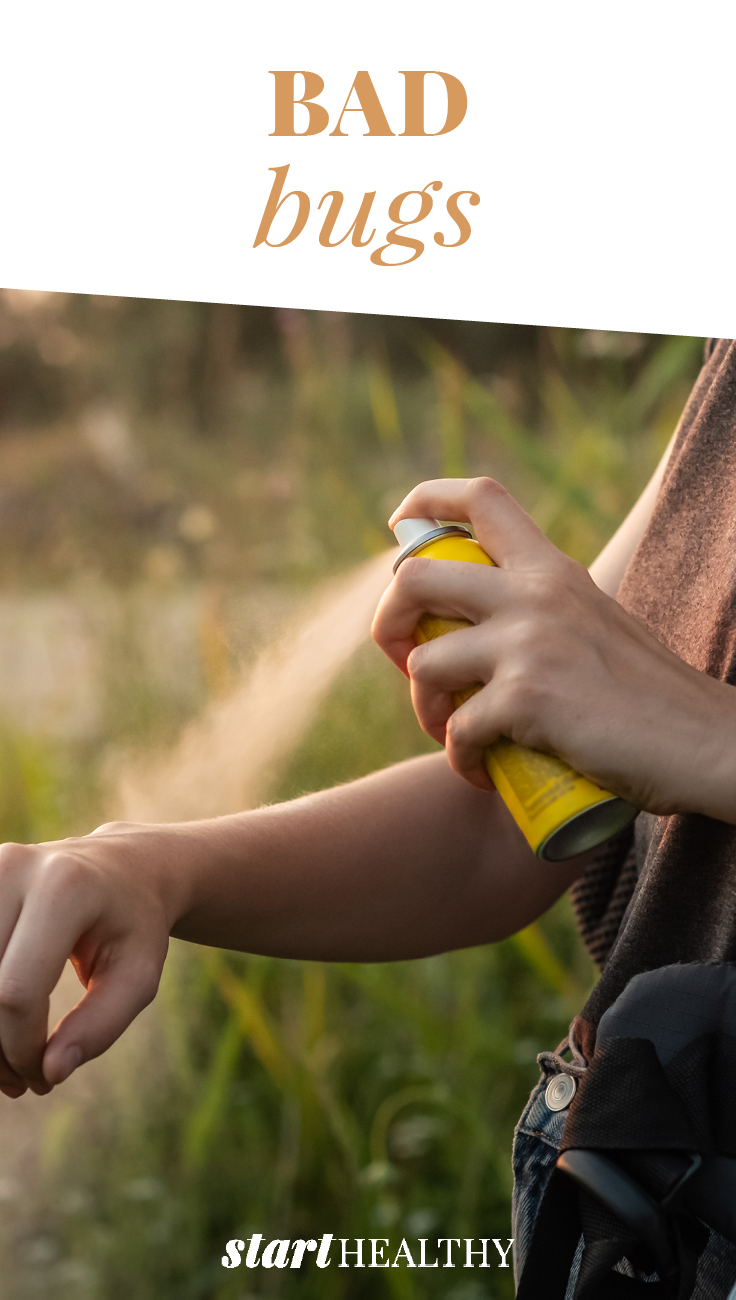Bugging Out
With longer, warmer days, there’s no question that summer is prime time to enjoy the great outdoors. According to the Outdoor Industry Association, about half of the American population participated in an outdoor activity in 2018—be it hiking, biking, running, or camping, among others. Getting outside and experiencing nature is an amazing opportunity that shouldn’t be overlooked—but there’s at least one unfortunate downside you’re likely to encounter. Some of nature’s tiniest creatures can create the biggest problems.
No matter what state you live in, if you’re spending time outside, you’re bound to have a run-in with bugs. These interactions don’t always have to be negative, but because of a lack of protection and understanding, our relationship with them is often a harmful one to both parties. These creatures are still all essential members of the ecosystem and serve an important purpose, and there’s no reason we can’t coexist.
Familiar Foes
Because of their widespread habitats, there are certain types of bugs we are more likely to encounter than others, and many of us have probably had an unpleasant experience with them all. Some of the most obvious to keep an eye out for are bees, mosquitoes, and ticks—all of which are known to carry potentially harmful diseases or cause pain or allergic reactions with their bite or sting.
BEES
As one of the most important species on the planet (if not the most important), bees play a critical role in our food supply. These little pollinators contribute to one out of every three bites of food we eat—meaning their survival is directly linked to our own. However, when threatened, honeybees (and wasps and hornets) can inject their venomous stinger into the skin, causing a painful reaction and swelling.
Bee Sting Treatment:
• Although painful, it’s important to remain calm and carefully remove the stinger by scraping it out using your nail or with a piece of gauze. (Remember: scrape, don’t squeeze.)
• Wash the affected area with plain soap and water, and apply an ice pack to help with swelling.
• If needed, pain medication such as ibuprofen or acetaminophen can be taken as directed on the packaging. But keep an eye out for signs of a more serious reaction, such as fever or difficulty breathing.

MOSQUITOES
Humans and mosquitoes are practically mortal enemies, and it’s easy to see why. These insects are in a special class called vectors—bugs that are known to carry and spread infectious diseases like West Nile virus and Zika.
Mosquito Bite Care:
• To relieve itching, apply a small amount of hydrocortisone cream or calamine lotion to the affected area.
• Antihistamine medication such as Benadryl can be administered as directed on the packaging to help with severe itching and swelling.
• Pay attention to any symptoms, such as a fever, which could require further medical attention.
TICKS
Ticks are among the most feared bugs because of their propensity for carrying Lyme disease, among other infections. They are most active April through September and can be found in wooded areas or in tall grass or brush, as well as on our four-legged friends. It’s most important to check for ticks in hair, ears, underarms, and belly buttons, around the waist, and on the inner legs and back of knees. Always check yourself, children, and pets after spending time outdoors—especially after hiking or engaging in other activities where ticks are likely to be.
Tick Treatment:
• If you do find a tick, use fine-tipped tweezers to carefully remove it, grabbing as closely to the skin as possible. Gently pull it upward with light pressure, and, once it’s removed, thoroughly clean the area and your hands with rubbing alcohol or plain soap and water.
• Never attempt to squish a tick in your hands. After removal, place the tick in small cup filled with alcohol or in a sealed bag or container, wrap it in tape, or flush it down the toilet.

Plan and Prevent
Although encounters with bugs are sometimes unavoidable, there are plenty of ways you can plan for and prevent painful bites from happening. If you’re planning on spending any time outside, follow these guidelines to best protect yourself.
Spray away
When selecting an insect repellent, choose an Environmental Protection Agency-registered product, and carefully follow directions for use. Examples of active ingredients in EPA-registered insect repellents include DEET, picaridin, and oil of lemon eucalyptus (OLE). (OLE is not recommended for use on children under three).
Cover up
One of the best ways to protect yourself from bug bites or stings is by covering up as much of your skin as possible. If you’re expecting to travel through tall grass or shrubs, consider wearing tall socks (and tucking your pants into them), as well as long sleeves. If you do notice any ticks on your clothing, remove them. You can also run dry clothes through the dryer on high heat for ten minutes to remove any ticks that may still be attached to the clothing. If washing clothes first, use hot water.

Wash off
It can be tempting to want to lie down after a long day spent outdoors, but it’s critical to shower as soon as possible when you get home. Just like hot water can remove ticks from your clothing, a shower within two hours of being outside is proven to reduce the risk of Lyme disease, and it can help remove loose ticks from your skin.
Just because interactions with bugs are unavoidable doesn’t mean you have to fear the great outdoors. When you’re informed about the risks and how to protect yourself from them, you’re much more likely to have a pleasant experience—and the bugs are, too.
For more info on preventing bug-borne illnesses, visit cdc.gov.









